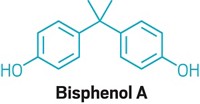Advertisement
Grab your lab coat. Let's get started
Welcome!
Welcome!
Create an account below to get 6 C&EN articles per month, receive newsletters and more - all free.
It seems this is your first time logging in online. Please enter the following information to continue.
As an ACS member you automatically get access to this site. All we need is few more details to create your reading experience.
Not you? Sign in with a different account.
Not you? Sign in with a different account.
ERROR 1
ERROR 1
ERROR 2
ERROR 2
ERROR 2
ERROR 2
ERROR 2
Password and Confirm password must match.
If you have an ACS member number, please enter it here so we can link this account to your membership. (optional)
ERROR 2
ACS values your privacy. By submitting your information, you are gaining access to C&EN and subscribing to our weekly newsletter. We use the information you provide to make your reading experience better, and we will never sell your data to third party members.
Environment
Most Plastics Release Estrogenic Chemicals
Study finds that even BPA-free products leach potentially problematic compounds
by Stephen K. Ritter
March 7, 2011

From plastic bags to water bottles, most plastic products—even those that don't contain the estrogen mimic bisphenol A—leach chemicals that trigger a bioassay for estrogenic activity, according to an analysis of more than 450 common plastic products (Environ. Health Perspect., DOI: 10.1289/ehp.1003220). The researchers who carried out the study, which only tested for estrogenic activity and did not identify any specific chemicals, suggest that this ubiquitous estrogenic activity could be eliminated by carefully reformulating plastics.
The study didn't center on BPA but instead focused on quantifying the biological effect of estrogenic activity, irrespective of the chemical causes, explains neurobiologist George D. Bittner of the University of Texas, Austin, who led the study. "Although BPA is the most notorious chemical with estrogenic activity used in plastics, it is not the only one, nor does it have the highest biological effect," Bittner says.
The research was carried out by a team including researchers at CertiChem and PlastiPure, two contract firms founded by Bittner. CertiChem uses its estrogenic activity assays to test plastics, foods, chemicals, and packaging for clients. PlastiPure is a technology company that works with clients to design plastic formulations so products can be certified to be free of estrogenic activity. The study was funded in part by the National Institute of Environmental Health Sciences, which publishes Environmental Health Perspectives, and the National Science Foundation.
The scientists extracted small pieces of plastic with saline or ethanol and then added samples of the extracts to cultures of MCF-7 human breast cancer cells. After an incubation period, the researchers used ultraviolet spectroscopy to quantify the amount of DNA produced by the cells, which proliferate in response to estrogenic chemicals.
Bittner's team found that about 70% of the plastic items tested positive for estrogenic activity. But when the researchers stressed the materials under "real world" conditions of simulated sunlight, microwaving, and dishwashing, about 95% of the products tested positive, including most of the products labeled as BPA-free.
Without picomolar-level chemical analysis of the extracts and follow-up assays of each chemical, the researchers would not be able to tell which chemical or combination of chemicals cause the biological response, Bittner says. But he believes compounds that have phenolic moieties such as BPA or that are converted to or degrade to phenolic compounds during product use are the most common culprits of estrogenic activity. Not all chemicals that show estrogen-like activity are necessarily toxic, he adds.
"It's not entirely surprising that the plastics have components that are estrogenic, as these chemicals all share similar properties," says Julie E. Goodman, a toxicologist at environmental risk consulting firm Gradient and an adjunct faculty member at the Harvard School of Public Health.
"Although this study was not designed to address which particular components are responsible for the estrogenic activity, or whether they will have estrogenic activity in humans or enough estrogenic activity to affect health, the study's design is reasonable to answer the basic question regarding whether plastics contain leachable components with estrogenic properties," Goodman says.
For now, manufacturers who have gone BPA-free have switched from polycarbonates and epoxy resins to different base polymer systems, notably glycol-modified polyethylene terephthalate and clarified polypropylene, Bittner notes. "As our data show, the switch to new materials has not ameliorated the estrogenic activity," he says. But it's encouraging that some plastics don't have estrogenic activity, Bittner adds, and he believes that chemists have the capability to broadly design affordable products with properties comparable to today's plastics that don't release detectable estrogenic chemicals.





Join the conversation
Contact the reporter
Submit a Letter to the Editor for publication
Engage with us on Twitter